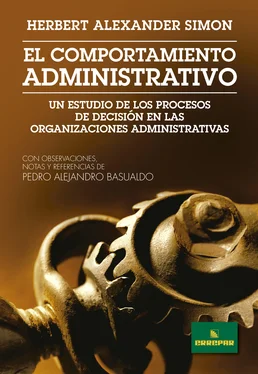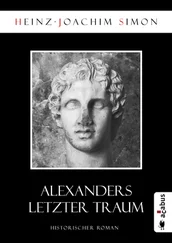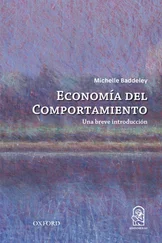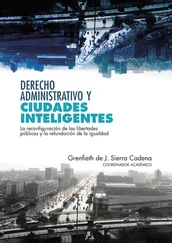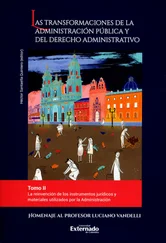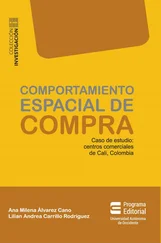(1998.b).Why public administration? Journal of Public Administration Research and Theory , 8 (1): 1-11. (The 1997 Donald C. Stone lecture).
(1997.h).An empirically based microeconomics .Cambridge, UK: Cambridge University Press. (The 1993 Mattioli lectures, Universitá Commerciale Luigi Bocconi, Milano).
(1997.d).Models of Bounded Rationality . Empirically Grounded Economic Reason (vol. 3). Cambridge, MA: The MIT Press.
(1997.c).Administrative behavior (Cuarta edición). New York, NY: The Free Press.
(1996.d).Computational theory of Cognition .En W. O’Donohue & R.F. Kitchener (Eds.), The Philosophy of Psychology . London, England: SAGE Publications.
(1995.j).The theory of scientific discovery .En J. Gotschl (Ed.), Revolutionary changes in understanding man and society : 5-73. The Netherlands: Kluwer Academic Publishers.
(1995.h).Machine as Mind .En K.M. Ford, C. Glymour & P.J. Hayes (Eds.). Android Epistemology , pp. 1-40 Menlo Park, CA: AAA/I The MIT Press.
(1995.e).Problem forming, problem finding, and problem solving in design .En A. Collen & W.W. Gasparski (Eds.), Design and systems: General applications of methodology , Vol. 3: 245-257. New Brunswick, NJ: Transaction Publishers.
(1995.b).Rationality in political behavior . Political Psychology , 16, 45-63.
(1992.d).Scientific discovery as problem solving . International Studies in the Philosophy of Science , 6: 3-14.
(1991.k).Problem formulation and alternative generation in the decision making process. En A. Chikan, et al. (Eds.), Progress in decision, utility and risk theory : 77-84. Boston, MA: Kluwer.
(1991.e).Problem representation .In R.F. Rashid (Ed.), CMU Computer Science: A 25th Anniversary Commemorative : 449-463. New York, NY: ACM Press.
(1989.i).Large organizations in modern society . Il Politico: Rivista Italiani di Scienze Politiche, 54: 545-551.
(1989.b).The scientist as problem solver .In D. Klahr & K. Kotovsky (Eds.), Complex information processing: Essays in honor of Herbert A. Simon , V Parte, Capítulo 14. Hillsdale, NJ: Erlbaum.
(1986.m).The impact of electronic communications on organizations. In R.Wollf (Ed.). Organizing Industrial Development . Capítulo 14. Berlin: Walter de Gruyter: 251-266.
(1984.e).Models of Bounded Rationality and Other Topics in Economics. Behavioural Economics and Business Organization. MIT Press. MA.
(1983.b).Search and reasoning in problem solving . Artificial Intelligence , 21, 7-29.
(1982.c).Models of Bounded Rationality. Economic Analysis and Public Policy (Vol.2). Cambridge, MA: The MIT Press.
(1979.l).Lessons for AI from human problem solving . Computer Science Research Review : 65-73, Carnegie-Mellon University.
(1979.h).The consequences of computers for centralization and decentralization .En M.L. Dertouzos & J. Moses (Eds.), The computer age: A twenty-year view : 212-228. Cambridge, MA: The MIT Press.
(1978.b). Information-processing theory of human problem solving. En W.K. Estes (Ed.), Handbook of learning and cognitive processes , Vol. V: 271-295. Hillsdale, NJ: Erlbaum.
(1977.a).The new science of management decision (rev. ed.). Englewood Cliffs, NJ: Prentice-Hall.
(1976.a).Administrative behavior (Tercera Edición), New York, NY: The Free Press.
(1973. j).The Shape of Organization .Artículo no publicado.
(1973.h).The Structure of Ill Structured Problems . Artificial Intelligence , Vol.4, nº 3: 181-201
(1971.b).Designing organizations for an information-rich world .En M. Greenberger (Ed.), Computers, communications, and the public interest : 37-72. Baltimore: MD: The Johns Hopkins Press.
(1970.d).Basic trends in modern organization. Soshiki Kagaku Organizational Science, 4: 44-52.
(1970.c).Information storage as a problem in organization design. Ekonomiskt forum, Argang 33: 46-59.
(1969.a).The sciences of the artificial .(The Karl Taylor Compton Lectures). Cambridge, MA: The MIT Press.
(1967.b).The business school: A problem in organizational design. Journal of Management Studies , 4: 1-16.
(1964.c).On the concept of organizational goal. Administrative Science Quarterly , 9: 1-22.
(1962.e).The Architecture of Complexity. Proceedings of the American Philosophical Society, Vol. 106, No. 6.: 467-482.
(1961.e).The control of the mind by reality: Human cognition and problem solving. En S.M. Farber & R.H.L. Wilson (Eds.), Control of the mind : 219-232. New York, NY: McGraw-Hill.
(1960.b).The new science of management decision .New York, NY: Harper & Row.
(1957.e).The Span of Control: A reply . Advanced Management , 22 (4), pp. 14-29.
(1957.c).Models of man .New York, NY: Wiley.
(1957.b).Authority .In C.M. Arensberg, et al. (Eds.), Research in industrial human relations : Capítulo 7. New York, NY: Harper & Brothers.
(1957.a).Administrative behavior (Segunda Edición). New York, NY: Macmillan.
(1956.b).A comparison of game theory and learning theory . Psychometrika , 21: 267-272.
(1955.c).Organization structure - end or means? Seminars on Administration for Public Health Service Executives: 1-6. Washington, DC: U.S. Department of Health, Education, and Welfare.
(1955.b).Recent advances in organization theory. In Research frontiers in politics and government : Capítulo 2. Washington, DC: The Brookings Institution.
(1954.b).Staff and management controls. The Annals of the American Academy of Political and Social Science, 292: 95-103.
(1953.c).Birth of an organization: The economic operation administration . Public Administration Review , 13: 227-236.
(1953.b).Discussion: Decision-making and the theory of organization . Econométrica , 21: 348.
(1952.d).A comparison of organisation theories . The Review of Economic Studies , 20 (1): 40-48.
(1952.c).Comments on the theory of organizations. American Political Science Review , 46: 1130-1139.
(1952.a).On the application of servomechanism theory in the study of production control. Econometrica , 20: 247-268.
(1950.b).Modern organization theories . Advanced Management , 15: 2-4.
(1946.a).The Proverbs of Administration. Public Administration Review , 6, 53-67.
(1944).Decision-making and administrative organization. Public Administration Review , 4: 16-31.
Читать дальше
